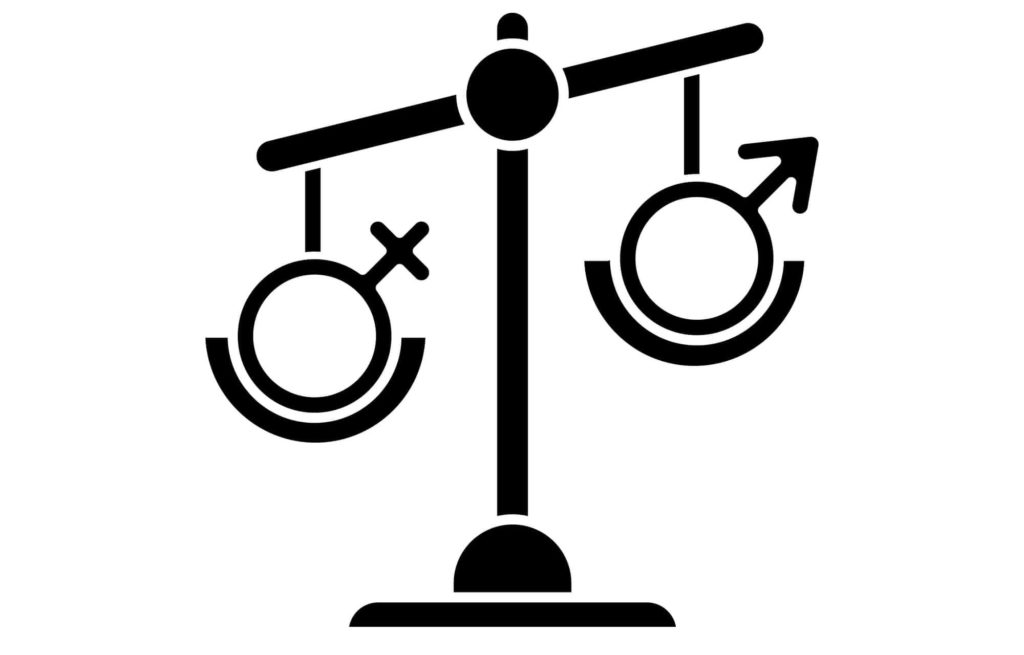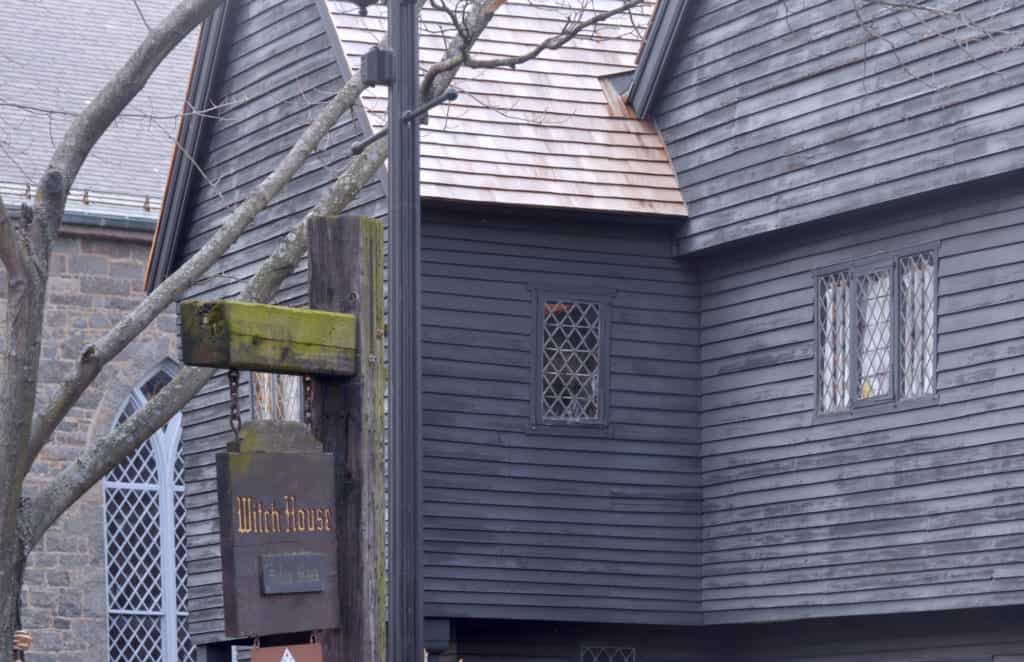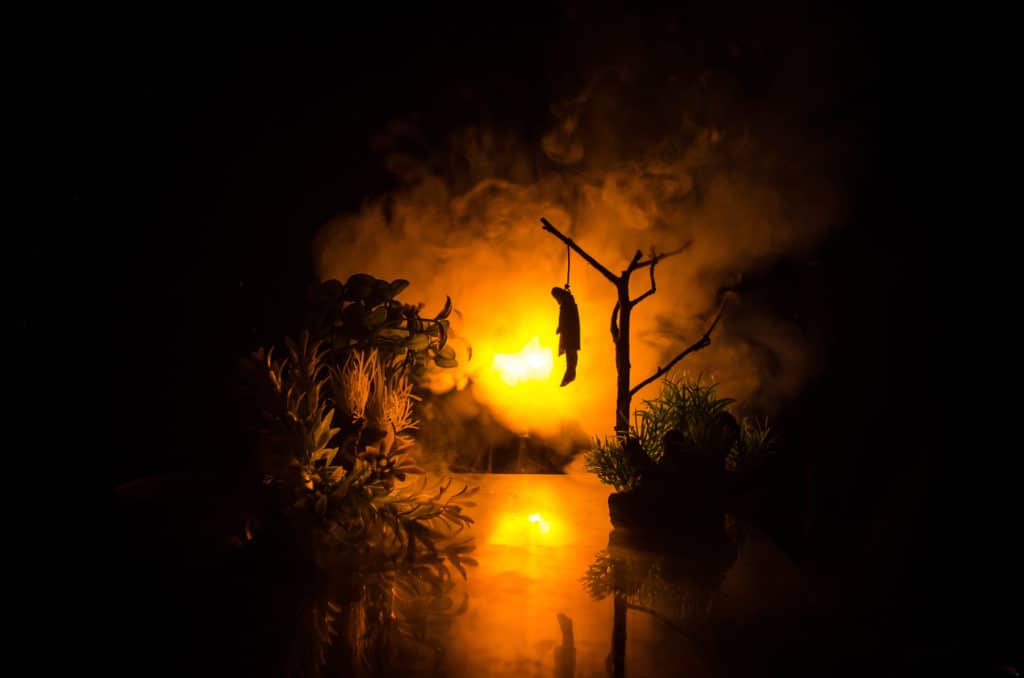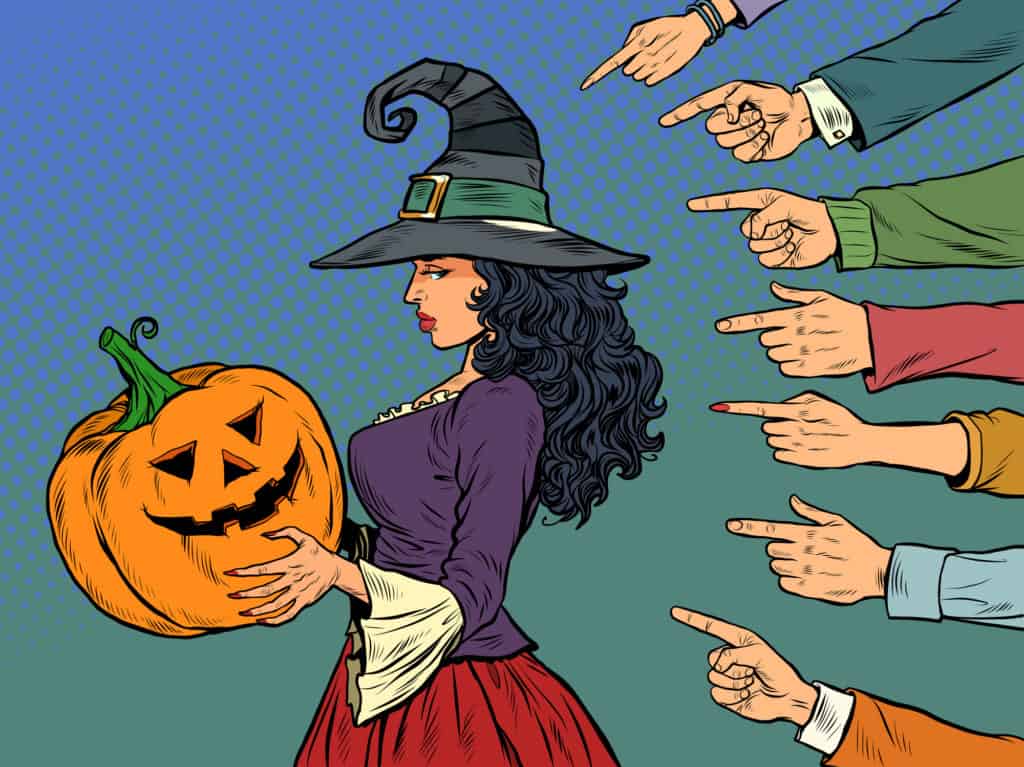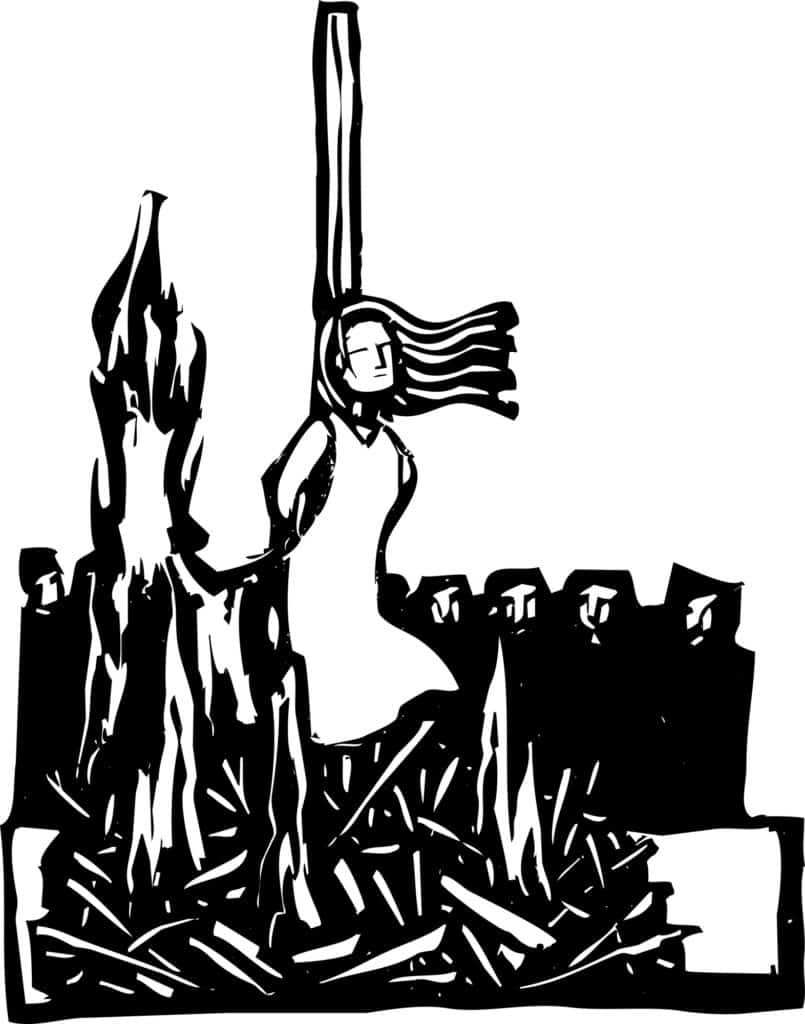It all started with the Salem Witch Trials…
In our contemporary world, it’s common to find people and businesses proclaiming the importance of women’s health. It’s as though we’ve finally realized, as a species, that we depend on it.
Yet, a certain stigma sadly attaches itself to any female healthcare subject ‘below the belt’.
That’s not a new attitude, however.
For centuries, women’s bodies have been shunned, widely ignored, vilified, and often proclaimed as ‘evil’. As a symbol of historical sin, nothing seems to surpass the biological female body.
More Blogs From Nancy Branberg
Can You Prevent Postpartum Preeclampsia?
The Different Stages Of Pelvic Organ Prolapse: What You Need To Know
Is Pregnancy The Cause of My Knee Pain?
In this new series of blogs exclusive to Nancy Branberg PT, we’re going to delve into something that most people may find uncomfortable; how society views the female body, and what impact these attitudes have had on women’s health.
‘Uncomfortable’, you say? Absolutely. We find a lot of women can become embarrassed, or shy away, from their discomforts. Let alone discover where this ‘shame’ comes from.
Here in my health clinic, we want women to know that they should be comfortable in their own bodies. The quirks of the female body might’ve been a mystery at some point in history, but medical conduct has moved on.
Our Modern World
While the medical community now largely places both sexes on the same level, it remains different in society. And while it may feel easier to bury our heads in the sand, rather than think about the complexities of modern civilization, it’s in our bodies’ best interest to keep this discussion going.
The shame and embarrassment that we may feel as women (almost hard-coded into our DNA) stems from various sinister historical sources. By deep-diving into these heritage aspects, we’re going to pinpoint the origins of the stigma that surrounds the female body.
By doing this, we can address the harmful ideology, and instigate those first steps towards understanding modern-day dishonor around our bodies. Once we’ve explored the history around this harmful rhetoric, only then can we progress free from the shackles of societal shame.
Despite society’s elevation of the female body to an almost God-like status through art and media, the form of this body is often unattainable. The female body exists both physically and politically, and there’s certainly a disconnect between how the body functions and what society imposes on our form.
Over many years, the politicization of women’s bodies has meant that governing states have enjoyed more control over your body than you have.
But where did it all kick-off? It’s time to venture back to the late 17th century.
Status Quo Or Stigma?
They say it’s a man’s world, and that’s almost true in terms of medicine.
Throughout the course of recorded history, women’s rights have been turbulent and disrupted. Female behavior, and bodies, have been the subject of many rules and regulations from which men mostly escaped.
Stigma has surrounded the female body almost unabated for such a length of time, that it has become part of the US status quo. Basically, societal expectations have dictated the “ideal” female form for hundreds of years. At the same time, the female body has been deemed unnatural.
Initially, plumpness, and a fuller frame, were the ideal signs of beauty. As time has progressed, there’s now an unhealthy fascination with the mostly-unattainable hourglass figure.
Whether it’s thinner or fuller, the female body has always been scrutinized. This scrutiny has – historically – always outweighed the need for any medicinal study.
In medicine, the female body was widely ignored. There’s plenty of evidence to prove that anatomy only seemed to focus on the male physique.
From da Vinci’s Vitruvian man, to contemporary anatomy textbooks, the male body has always taken center stage. This one-track approach to biology has excluded approximately 51% of the Earth’s entire population.
A one-sex model of anatomy was used in medicine for many years. It’s only in relatively recent history that women’s bodies have been differentiated from those that are male.
Each individual body is different and has its own quirks, but, traditionally all bodies have been diagnosed and treated according to the male anatomical model.
It doesn’t take much to realize that there are some major differences between the male and female bodies. Yet, medical grandees of old jettisoned such a notion.
Bearing this in mind, it’s no wonder then that female health has been ignored for so long. Especially when you consider how the medical community was populated by males, taught by other males; reinforcing and continuing the gender-driven divide.
During this time, the female body was both shunned and demonized. ‘Elite’ members of society broadcast their opinion that women seemingly held mystical and dangerous properties.
Perhaps the most violent and absurd example of the demonization of the female body comes from the infamous Salem Witch Trials, that Americana seems to relish as part of historical culture. The phrase “witch hunt” is still employed by media outlets to this very day.
Women were scrutinized, subjugated to horrific prison conditions, and hanged, all based on “witchcraft” allegations. This frenzied and hysterical frame of mind brought accusations to all age groups. Including girls as young as four-years-old.
A History Of Witchcraft
Back in the late 1600s, declaring any woman as a ‘witch’ would almost certainly result in a life-or-death trial, judged by an unrestrained community gripped by fear of potential devil-worship.
Witchcraft was a serious crime, and was largely associated with women in general. Of all of those accused of witchcraft in the Salem area of Massachusetts, historians claim approximately 78% of them were female.
The fascination with witches started in Europe, and was mainly used as a way to victimize vulnerable or undesirable individuals. In the American colonies, more specifically, the district of Salem was the site of mass accusations of witchcraft.
But why Salem?
Before the English civil war, Puritan culture migrated overseas to colonial America, channeled through Salem. The Puritans were English Protestants who remained hell-bent on purifying the Church of England, and freeing the church from Roman Catholic practices.
They claimed that the Church of England had not been fully reformed, advocating greater purity and doctrine. Puritan ideology was steeped in superstition, and steered away from more traditional forms of Christianity.
Puritans believed that men and women were equal in the eyes of God, but that the Devil found favor with women. Women’s souls were viewed as ‘unprotected’ because the female form was weak and vulnerable.
Due to this migration and belief, Salem became the crux of New England (and American) witchcraft hysteria. These Puritan migrants started many of the initial colonies that would become modern America, installing their witch hunt credentials across the land.
Salem: The Home Of The Witch
Witch trials were most prolific between February 1692 and May 1693, and became a popular event in which to attend. Salem accused no less than 200 individuals of witchcraft during this period – roughly one person every two days.
Witch trials were less a ‘cleansing of the soul’, and more a village spectacle. People would travel across large distances to view the trial/punishment and circumvent any finger-pointing that came their way.
After all, if they were present and approving of the punishment, and shouted louder than the others, they would hopefully exonerate themselves from any future allegations. Meanwhile, host stalls and food vendors would add to the spectacle when execution time loomed.
Of the 200 people accused, thirty were found guilty, and nineteen were hanged.
Contrary to popular belief, however, none of those were condemned to be burned at the stake. Following English law of the time (of which the Puritans brought with them to America), the sufferer was instead taken to Gallows Hill to ‘die by hanging’.
Digging into the historical records displays a higher number of deaths, however. Some of those who were cited as working with the devil instead died in jail while awaiting trial. Jail conditions remained unsanitary, and victims were abused by the hand of the jailer and others.
Targeting The Vulnerable
Witch trials typically targeted society’s most vulnerable people. They were also an effective way to make an example of any woman who stepped outside their “prescribed roles”.
Women of all ages were accused of witchcraft; the youngest being four-year-old Dorothy Good. Dorothy and her mother were both accused of witchcraft, and while her mother Sarah was hanged for the crime, Dorothy was imprisoned from March until December, 1692.
Although eventually freed, the lasting impact of the harsh jail-cell conditions caused irreparable damage to Dorothy’s mental state. Many claimed Dorothy had become “clinically insane” after the ordeal.
Although there are cases where men were accused of evil activity, women were more often the target of accusations. Mainly down to that aforementioned concept that Puritans viewed women as “more susceptible to sin and damnation than men were”.
The woman’s role in Puritan society was to be a dutiful wife, a caring mother, and a strong believer in God; anything outside of this could lead to an accusation of witchcraft and devil worshiping.
Puritan society also viewed women as complex beings, due to their reproductive capabilities. And, instead of addressing the physiological differences between the sexes, most decided to ignore female anatomy altogether.
It wasn’t until sometime after the witch trials that anatomist Georg Ludwig Kobelt published a detailed account of the female body. This didn’t occur until 1844. However, his work was still widely ignored by society at the time.
The Victorian era was still hard-pressed as a male-dominated profession, arguably pushing the same attitude towards a blatant disregard for female anatomy.
Of course, times move on, and we now know that anatomy between the sexes is different – but not in the religious way that was once considered.
The Female Body: The Ideal Target For Accusation
Witches were believed to have made a pact with the devil in exchange for inhuman powers, selling ownership of their bodies to dark forces under the cover of nightfall. Therefore, religious judges considered their bodies the greatest known threat to mankind.
Those accused were mostly older women, who couldn’t defend themselves from the lines of accusation because of their social standing. These women were usually widowed and impoverished. Quite frankly, they were the easy targets.
Once accused of witchcraft, the supposed crimes could include anything from killing children, to maiming pregnant women, and causing impotence in men. Women who were accused didn’t get a say in their own future. Forced into trials because they were deemed highly dangerous, their fate was effectively sealed.
To avoid torture, women would often confess to crimes they never committed. Furthermore, people would give false witness statements against the ‘witch’, to obey the will of society and prevent ramifications against their own families.
In essence, the female body became a terrifying beacon of evil, and weakness. As a power source for evil, society believed that these witches could use their feminine essence to manipulate, control and torment.
This hysteria around witchcraft meant that our bodies were associated even more so with the unnatural. It would take hundreds of years before society dropped this notion and moved forward with rational thought.
Even Sigmund Freud (1856-1939), creator of the psychoanalytic theory and potential father of modern-day psychology, had deemed that the female body was essentially unimportant to the study of Biology.
The fear surrounding witchcraft may stem from antiquated society, however, the ramifications of the demonized female body are still long-lasting. The annals of history are littered with male biologists, anatomists, and doctors, claiming that the female body is both inferior and irrelevant.
Being Female: The Body Of A Witch
The Salem witch trials have been speculated as one of the biggest examples of mass hysteria in American history. While accusations of witchcraft were commonplace in colonial America, confessing and repenting often lead to forgiveness from the supposed witch’s community.
The witch trials were symptomatic of the Puritans’ view of women and their gender roles.
Society became so obsessed with punishing the female body, that nobody stopped to think about how female life could be preserved. In hindsight, we know that bodies should be examined and treated individually, especially between the different sexes.
The witch trials have left us with a societal hangover. Women’s bodies haven’t only been objectified, they’ve simultaneously been scrutinized by society and shunned from the medical textbooks of old.
It was far easier to condemn the female body than it was to understand its complexities.
In fact, examinations of the female body were done using the male body as a template – the only difference being the female’s “inverted genitals”.
Today, we’re on our way to celebrating the female body. It all starts with you and me, and every other woman out there.
As women, it’s our job to take back the power over our bodies. Our bodies have been ruled over and discriminated against for too long. It’s time to reclaim our history and – more importantly- our bodies, too.
We’re not living in the 17th century anymore. As a society, the only way we can keep progressing is to be proud of our physical forms and take care of ourselves.
But, why haven’t women taken this attitude before now?
Well, the thing is, they have. And the battle for equal rights, equal pay, societal standing, and women’s well-being has seen suffering of extreme magnitude.
And we’ll be exploring more on that in our next installment.




